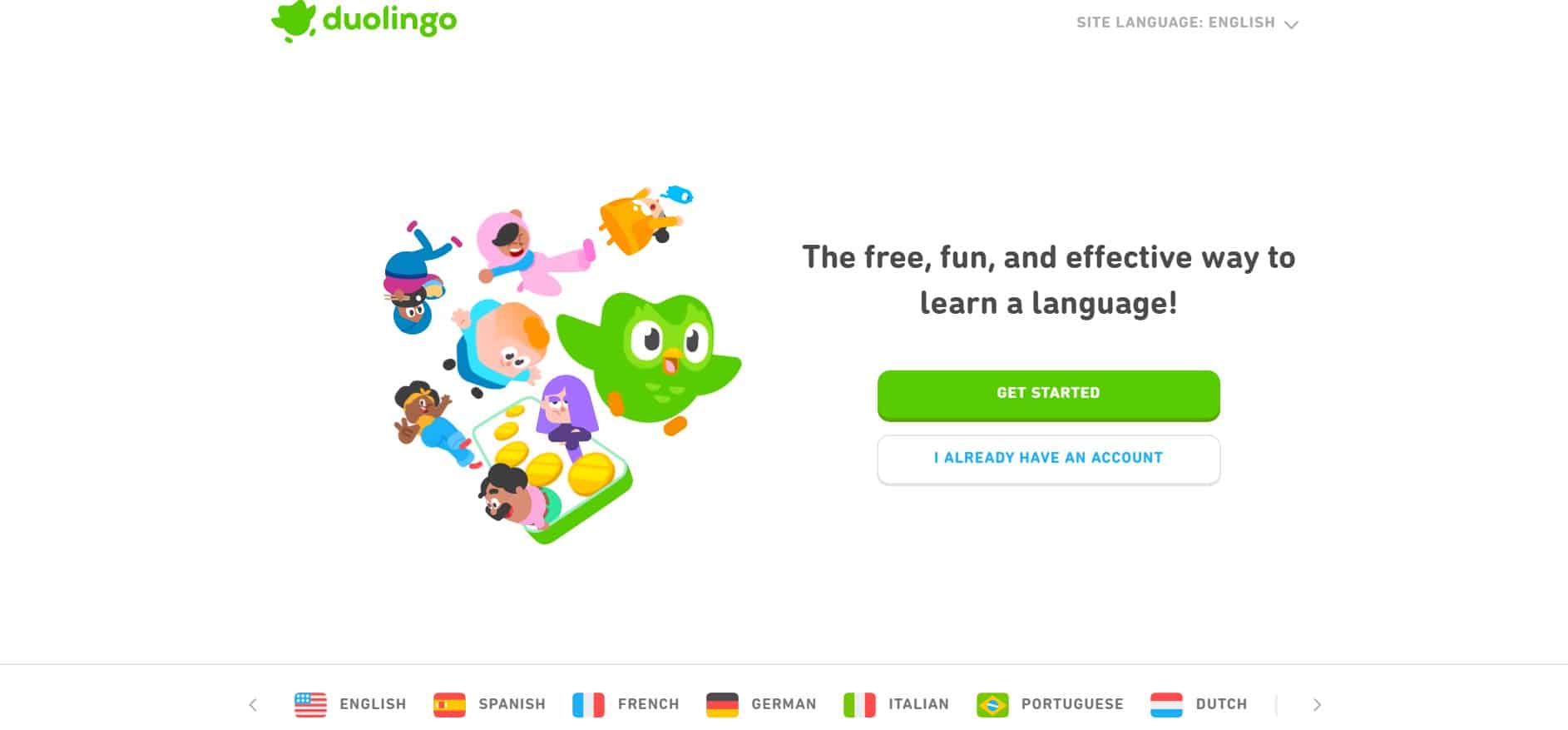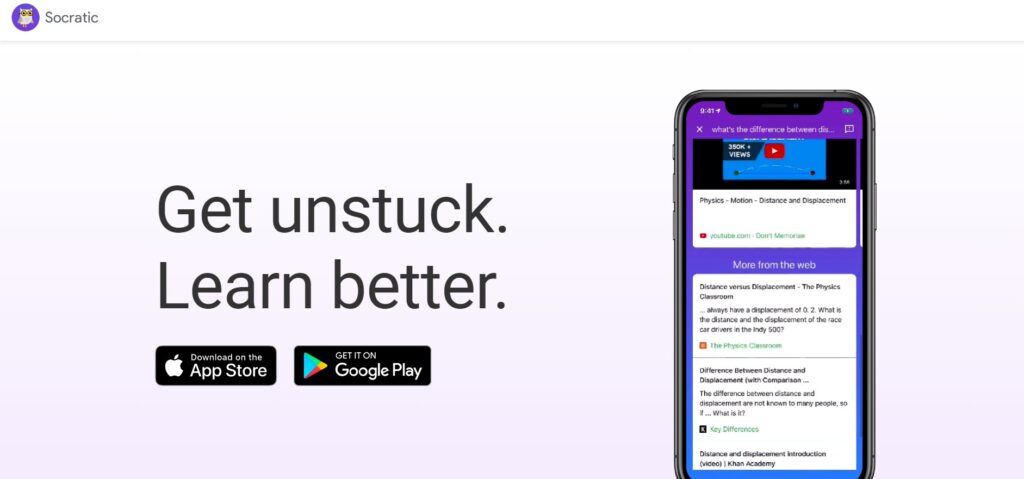7 OF THE BEST AI-POWERED TOOLS FOR KIDS LEARNING
From custom storytelling adventures to interactive problem-solving activities, AI-powered tools for kids learning are not just enhancing learning—they’re making it a fun, immersive journey for children.
1. mobicip
With a focus on internet safety and educational enhancement, Mobicip utilises AI technology to help parents monitor and guide their children’s online activities. This tool is particularly beneficial in today’s digital age, where children are increasingly exposed to online content.
Key Features
- Parental Controls: Mobicip allows parents to monitor their children’s online activity, set time limits, and block inappropriate content, ensuring a safe browsing experience.
- Content Filtering: The AI technology automatically filters web content, providing children access to age-appropriate educational resources while keeping harmful material at bay.
- Activity Reports: Parents receive detailed reports on their child’s online behaviour, including the websites visited, apps used, and time spent online.
- Multi-Device Support: The platform supports various devices, including smartphones, tablets, and desktops, allowing for seamless learning across all digital platforms.
- Learning Resources: Mobicip curates educational content and resources, making it easier for children to find relevant and engaging material for their studies.
Use Cases
- Home Learning: Parents can use Mobicip to create a controlled learning environment at home, helping children focus on educational content while restricting access to distractions.
- Remote Learning Support: With the rise of online learning, Mobicip aids in managing screen time and ensuring that children engage with the right educational materials.
- Safety Monitoring: For parents concerned about online safety, Mobicip provides peace of mind by allowing them to track their children’s internet usage in real-time.
Pros and Cons
Pros:
- Comprehensive parental controls that ensure online safety.
- User-friendly interface that is easy to navigate for both parents and children.
- Extensive filtering options that adapt to a child’s age and maturity.
- Regular updates and improvements based on user feedback.
Cons:
- Some features may require a premium subscription for full access.
- Users may experience occasional glitches or delays in reporting.
- The learning resources may not cover all subjects comprehensively.
Pricing:
Mobicip offers a variety of subscription plans, starting from $4.99 per month. They also provide a freemium plan, allowing users to access basic features for free, with the option to upgrade to premium plans for additional functionality.
Website
To explore Mobicip further, visit their official site at mobicip.com.
2. Duolingo
Duolingo is Designed with an intuitive interface, Duolingo offers a diverse range of languages, making it an ideal choice for kids looking to enhance their linguistic skills in a playful environment.
Key Features
- Interactive Lessons: Duolingo uses bite-sized lessons that include speaking, listening, reading, and writing exercises, which keeps learners engaged and motivated.
- Personalised Learning Pathways: The AI algorithm tailors lessons based on individual progress and performance, ensuring that learners are challenged at the right level.
- Gamified Experience: The platform incorporates game-like elements, such as earning points, leveling up, and completing challenges, making learning enjoyable for children.
- Variety of Languages: Duolingo offers courses in multiple languages, including Spanish, French, German, Italian, and more, allowing children to explore diverse cultures.
- Community and Leaderboards: Learners can connect with friends, compete on leaderboards, and join a community, fostering a sense of camaraderie and motivation.
Use Cases
- Supplemental Language Learning: Parents can use Duolingo as a supplementary tool alongside traditional language courses to reinforce vocabulary and grammar.
- Homeschooling Resource: For homeschooling families, Duolingo provides a structured yet flexible approach to language learning, making it easier to fit into various curricula.
- Travel Preparation: Children can use Duolingo to learn basic phrases and vocabulary before travelling to a country where the target language is spoken.
Pros and Cons
Pros:
- Engaging and interactive learning format that keeps kids motivated.
- Personalised lessons that adapt to each learner’s needs.
- Free access to a substantial amount of content, with a well-structured freemium model.
- Support for a wide range of languages, appealing to diverse interests.
Cons:
- While it covers vocabulary and basic grammar, it may not fully prepare learners for conversational fluency.
- Some users may find the gamified aspects distracting rather than helpful.
- The free version includes ads, which can be a downside for some families.
Pricing
Duolingo offers a freemium plan, providing free access to a wide array of lessons and features, along with the option to upgrade to Duolingo Plus for $6.99 per month, which removes ads and allows for offline access to lessons.
Website
To discover more about Duolingo, visit their official site at duolingo.com.
See related Topics:
- TOP LISTS OF AI EMAIL GENERATOR
- 10 BEST AI QUIZ GENERATOR TOOLS WITH ANSWERS
- 11+ BEST AI-POWERED TOOLS FOR POEM WRITING
3. Socratic
Developed by Google, Socratic allows children to take pictures of their homework questions and receive step-by-step explanations and resources to facilitate learning.
This tool is particularly effective for students in middle and high school who are navigating a range of subjects.
Key Features
- AI-Powered Homework Assistance: Socratic uses advanced image recognition and AI to analyse homework questions and provide relevant explanations, examples, and resources.
- Subject Variety: The app covers a wide range of subjects, including mathematics, science, literature, history, and more, making it a comprehensive learning tool for students.
- Step-by-Step Explanations: Socratic breaks down complex concepts into manageable steps, helping students grasp difficult topics more easily.
- Resource Links: The app directs users to a wealth of educational resources, including videos, articles, and practice problems, ensuring a well-rounded understanding of the subject matter.
- User-Friendly Interface: The app’s intuitive design makes it easy for students to navigate and find the help they need quickly.
Use Cases
- Homework Help: Socratic serves as an invaluable resource for students struggling with homework, providing instant assistance and clarifying difficult concepts.
- Study Aid: The app can be used as a study tool, offering additional explanations and resources to reinforce learning in preparation for tests and exams.
- Group Projects: For collaborative work, Socratic helps students understand diverse topics, ensuring all group members are on the same page.
Pros and Cons
Pros:
- Instant assistance with homework questions, making learning more accessible.
- Covers a wide variety of subjects, appealing to different educational needs.
- Step-by-step explanations foster a deeper understanding of complex concepts.
- Completely free to use, making it an accessible tool for all students.
Cons:
- The reliance on image recognition may lead to occasional inaccuracies in interpreting questions.
- Some advanced topics may not have comprehensive resources available.
- While helpful for homework, it may not replace traditional learning methods or deeper classroom engagement.
Pricing
Socratic is completely free to use, offering all its features without any hidden costs or premium subscriptions.
Website
To learn more about Socratic, visit their official site at socratic.org.
4. AI math coach
Assisting students in mastering mathematical concepts through personalised learning experiences.
Leveraging AI technology, this platform offers tailored practice sessions and instant feedback, making it an ideal resource for kids looking to improve their maths skills at their own pace.
Key Features
- Personalised Learning Pathways: AI Math Coach creates customised learning plans based on the student’s current knowledge level and progress, ensuring that they receive the right challenges at the right time.
- Interactive Problem Solving: The platform encourages active engagement by presenting problems in an interactive format, allowing students to work through solutions step-by-step.
- Instant Feedback: Students receive real-time feedback on their answers, helping them understand mistakes and learn the correct methods immediately.
- Progress Tracking: The tool includes analytics that track student performance over time, providing insights into strengths and areas needing improvement.
- Gamified Learning: AI Math Coach incorporates gamification elements, such as rewards and achievements, to motivate students and make learning fun.
Use Cases
- Homework Support: Students can use AI Math Coach to get assistance with their math homework, ensuring they understand the concepts before submitting their work.
- Exam Preparation: The tool is ideal for students preparing for tests, as it allows for focused practice on specific topics and instant clarification of doubts.
- Skill Reinforcement: Teachers and parents can utilise AI Math Coach to reinforce skills learned in class, providing additional practice and support at home.
Pros and Cons
Pros:
- Highly personalised learning experience that adapts to individual needs.
- Engaging and interactive format that keeps students motivated.
- Instant feedback helps reinforce learning and correct misunderstandings.
- Comprehensive analytics provide valuable insights for parents and educators.
Cons:
- Requires a stable internet connection for optimal use.
- Some students may prefer traditional learning methods and may not engage fully with the platform.
- Advanced features may require a subscription, limiting access to certain resources.
Pricing
AI Math Coach offers a freemium plan, allowing users to access basic features for free, with the option to upgrade to a premium subscription starting at $9.97 per month for additional features and resources.
Website
To explore AI Math Coach further, visit their official site at aimathcoach.com.
Continue reading 7 Of The Best AI-Powered Tools For Kids Learning…
5. Hail labs
Focused on making learning accessible and engaging, Hailabs.ai offers a range of interactive tools and resources designed to support students in various subjects, including STEM (Science, Technology, Engineering, and Mathematics).
Key Features
- AI-Driven Personalisation: Hailabs.ai uses AI algorithms to create tailored learning experiences, adapting content and difficulty levels based on each child’s progress and understanding.
- Interactive Learning Modules: The platform provides a variety of interactive modules that encourage active participation, making learning both fun and effective.
- Comprehensive Analytics: Hailabs.ai offers detailed insights into student performance, helping educators and parents track progress and identify areas for improvement.
- Diverse Subject Offerings: The platform covers a broad range of subjects, with a strong emphasis on STEM education, ensuring that children receive a well-rounded learning experience.
- Collaborative Learning Environment: Hailabs.ai promotes collaboration among students, enabling them to work together on projects and learn from each other in a supportive environment.
Use Cases
- Classroom Integration: Teachers can incorporate Hailabs.ai into their lesson plans to provide additional support and resources for students, enhancing traditional teaching methods.
- After-School Learning: Parents can use the platform to facilitate after-school learning, offering their children engaging activities that reinforce classroom concepts.
- Remote Learning Support: Hailabs.ai serves as an effective tool for remote learning, providing interactive resources that keep students engaged and motivated from home.
Pros and Cons
Pros:
- Highly personalised learning pathways that adapt to individual needs.
- Engaging and interactive content that keeps students motivated.
- Detailed performance analytics that assist in tracking progress.
- Emphasis on STEM education, preparing students for future careers in high-demand fields.
Cons:
- Requires reliable internet access for optimal functionality.
- Some features may be more beneficial for specific subjects, limiting its use for broader curricula.
- The initial learning curve may be steep for some users unfamiliar with AI-powered tools.
Pricing
Hailabs.ai offers a freemium plan, allowing users to access basic features for free, with premium subscriptions starting at $10 per month for enhanced functionalities and additional resources.
Website
To learn more about Hailabs.ai, visit their official site at hailabs.ai.
7. eSpaark
This tool is focused on creating a fun and engaging environment, eSpaark provides a range of interactive tools and resources that help children develop essential skills in various subjects while promoting critical thinking and creativity.
Key Features
- AI-Powered Learning Pathways: eSpaark utilises advanced AI algorithms to personalise learning journeys for each child, adapting content and difficulty levels based on their unique abilities and progress.
- Interactive Learning Activities: The platform features a variety of engaging activities, quizzes, and games that encourage active participation and make learning enjoyable.
- Skill Development Focus: eSpaark emphasises the development of key skills such as problem-solving, critical thinking, and creativity, equipping children with essential tools for their future.
- Progress Tracking and Reporting: Parents and educators can monitor students’ progress through comprehensive analytics, which highlight areas of strength and those needing improvement.
- Collaborative Learning Environment: eSpaark fosters collaboration among users, allowing children to work together on projects, share ideas, and learn from each other in a supportive setting.
Use Cases
- Classroom Enhancement: Teachers can integrate eSpaark into their lesson plans to provide additional resources and interactive learning experiences, enhancing traditional educational methods.
- Supplemental Learning at Home: Parents can use eSpaark to supplement their children’s learning at home, providing access to engaging materials that reinforce school subjects.
- Skill Building Workshops: eSpaark can be employed in workshops focused on skill development, providing hands-on activities and challenges that stimulate learning in a fun way.
Pros and Cons
Pros:
- Personalised learning experiences that adapt to each child’s needs.
- Engaging, interactive activities that maintain children’s interest in learning.
- Comprehensive tracking features that provide valuable insights into student performance.
- Focus on critical skills essential for future success.
Cons:
- Requires a reliable internet connection for the best experience.
- Some features may be more suited for specific subjects, which could limit broader curriculum support.
- New users may experience a learning curve as they navigate the platform’s various tools.
Pricing
eSpaark offers a freemium plan, allowing users to access basic features at no cost, with premium subscriptions starting at £9.99 per month for enhanced features and additional content.
Website
To explore eSpaark further, visit their official site at espaark.com.
7. KidsAIStory
kidsAIStory is an innovative platform that combines the magic of storytelling with artificial intelligence to create personalised, interactive stories for children.
Designed to foster creativity and imagination, kidsAIStory enables kids to engage with literature in a unique way, allowing them to explore narratives tailored specifically to their preferences and interests.
Key Features
- Custom Story Creation: kidsAIStory uses AI technology to generate custom stories based on user inputs, allowing children to choose characters, settings, and plot elements, making each story a unique adventure.
- Interactive Storytelling: The platform encourages active participation by allowing children to make choices that influence the direction of the story, enhancing engagement and critical thinking.
- Educational Focus: Each story is crafted to not only entertain but also educate, incorporating lessons in morals, vocabulary, and comprehension skills suitable for young learners.
- User-Friendly Interface: The platform is designed with children in mind, featuring a simple and intuitive interface that makes it easy for kids to navigate and create their stories.
- Parental Controls: Parents can monitor their child’s activities on the platform, ensuring a safe and appropriate storytelling experience.
Use Cases
- Creative Writing Practice: Kids can use kidsAIStory to practice their creative writing skills, exploring different narrative structures and styles.
- Storytime at Home: Parents can engage in interactive storytime sessions with their children, fostering a love for reading and storytelling.
- Educational Settings: Teachers can integrate kidsAIStory into their classrooms to encourage creative writing and literacy development in a fun and engaging manner.
Pros and Cons
Pros:
- Highly personalised storytelling experience that stimulates creativity.
- Engaging and interactive format that keeps children interested.
- Educational elements embedded within the stories enhance learning.
- Safe environment with parental controls for added security.
Cons:
- Requires internet access to generate stories, which may limit use in offline settings.
- Some stories may require guidance for younger children to navigate effectively.
- The variety of story options may be overwhelming for some kids at first.
Pricing
kidsAIStory offers a freemium plan, allowing users to create a limited number of stories for free, with premium subscriptions starting at €7.99 per month for unlimited access to all features and resources.
Website
To learn more about kidsAIStory, visit their official site at kidsAISTory.com.




















